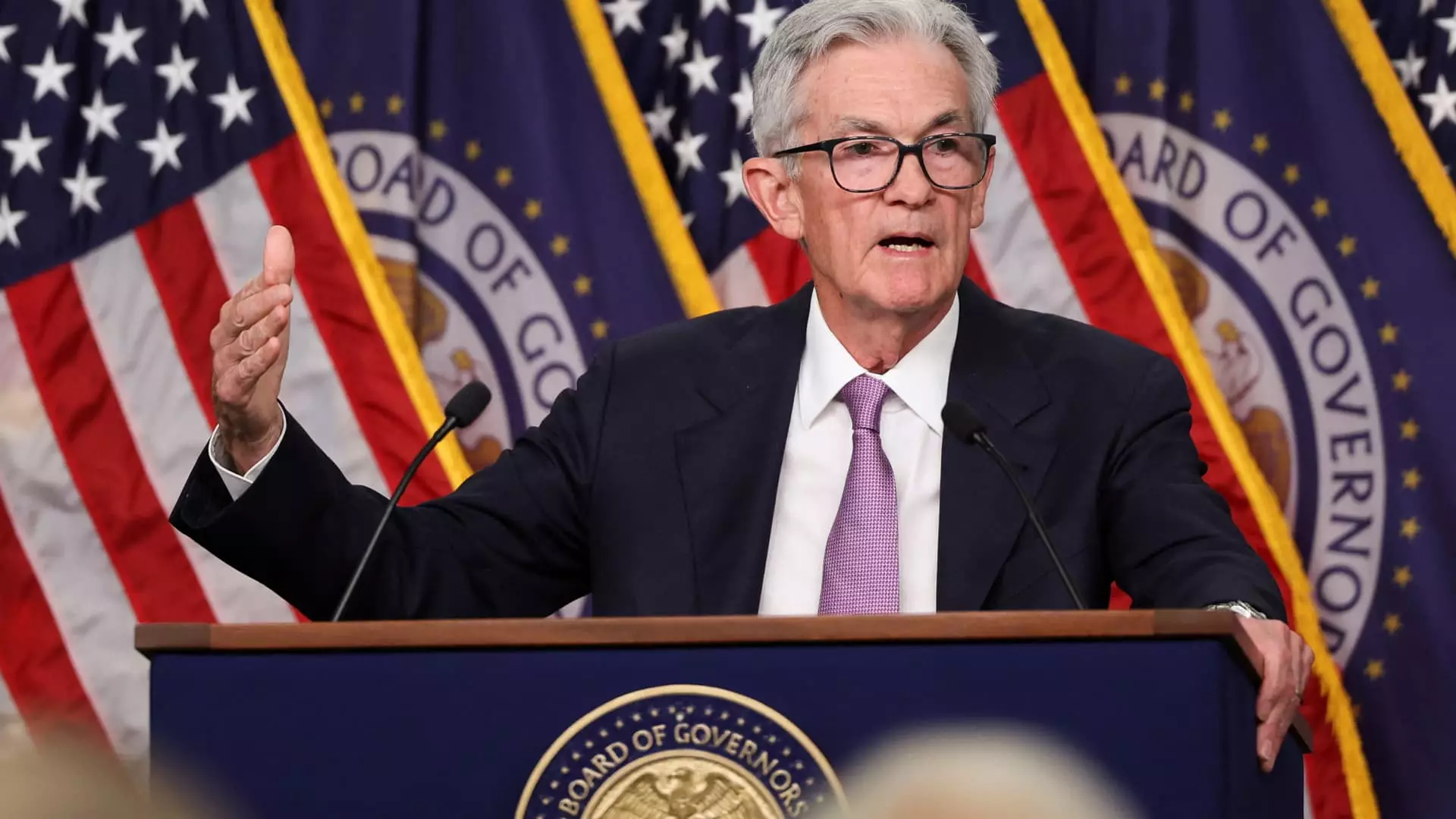On an otherwise standard Thursday in the world of finance, the Federal Reserve made headlines by approving its second consecutive interest rate cut, marking a significant moment in monetary policy. This reduction, though more measured than previous actions, illustrates the Fed’s commitment to recalibrating economic strategies amidst shifting economic conditions. The Federal Open Market Committee (FOMC) decided to lower its benchmark overnight borrowing rate by a modest quarter percentage point, setting it within a target range of 4.50% to 4.75%. This rate serves not merely as an interbank lending benchmark but also deeply influences consumer credit products, including mortgages and auto loans.
While the recent decrease had been largely anticipated by market analysts, its unanimous approval stands in stark contrast to the previous contentious decision, which saw the first dissent from a Fed governor in nearly two decades. This time, Governor Michelle Bowman joined her colleagues in reaching a consensus, emphasizing a unified direction for monetary policy.
In the aftermath of the rate cut, the FOMC issued a statement reflecting a nuanced understanding of current economic dynamics. The committee expressed a more balanced view regarding the risks facing employment and inflation goals, a shift from its earlier sentiment of greater confidence. The acknowledgment that “conditions have generally eased” in the labor market, coupled with a slight uptick in unemployment rates, flags a turning point; the labor landscape appears to be softening yet remains resilient overall.
For some time, the Fed has contended that addressing inflation is critical; however, this latest stance indicates a re-emphasis on bolstering employment—a key element of economic health. Fed Chair Jerome Powell has articulated the need to adjust policy to reflect these changing priorities, suggesting that previous aggressive measures to combat inflation may no longer be necessary.
Several economic indicators paint a complex picture of the current landscape. Despite an impressive gross domestic product (GDP) growth rate of 2.8% in the third quarter—above the historical average—the specter of persistent inflation looms large. Preliminary estimates for the fourth quarter forecast even a modest slowdown to about 2.4%. The labor market appears to be grappling with challenges, evidenced by a disappointing nonfarm payroll increase of just 12,000 jobs in October, which some attribute to external factors like severe weather or labor strikes.
As the Fed contemplates future rate adjustments, questions linger over how far the cuts will go, especially in light of a robust economy still battling inflationary pressures. Market observers note that while the Fed has decided to relax its stance, the unpredictable nature of external economic factors necessitates careful consideration.
The political context has also shifted, particularly following the recent election of President Donald Trump. Economists suggest that Trump’s proposed policies may introduce complexities that further exacerbate inflation, with anticipated tax penalties and immigration enforcement efforts raising concern over economic stability. Historically, the relationship between politics and monetary policy has been fraught with tension, and the Fed has traditionally refrained from engaging in political discourse. However, the outcome of the election could influence the Fed’s strategic choices moving forward.
Powell emphasized during a recent press conference that the central bank’s decisions remain insulated from political machinations. “In the near term, the election will have no effect on our policy decisions,” he reiterated, indicating a commitment to maintaining an independent approach as economic conditions unfold.
Market expectations now hinge on the Fed’s potential future rate cuts, with traders predicting more adjustments in the near term. The CME Group’s FedWatch tool suggests that traders anticipate another quarter-point reduction in December, followed by a period of assessment in January. Recent comments from FOMC members imply a measured approach, recognizing the potential need for further cuts while allowing time to analyze the economic repercussions of these monetary changes.
Despite the Fed’s efforts to lower rates to stimulate growth, market responses have been tepid. Interest rates on Treasury bonds and mortgage loans have surged, indicating that the bond market reacts independently of the Fed’s efforts. The 30-year mortgage rate has climbed to approximately 6.8%, demonstrating a disconnect between the Fed’s intentions and the market’s movements.
As the Fed navigates the challenges ahead, its primary goal remains a “soft landing”—curbing inflation without triggering a recession. While the preferred inflation measure sits at a manageable 2.1%, the core inflation rate of 2.7% remains a point of concern, suggesting that the battle against inflation is far from over.
As the Federal Reserve continues to adapt its monetary policy to fulfill its dual mandate of maximizing employment and stabilizing prices, it faces the intricate task of balancing economic growth with inflation pressures. Analysts and economists will be closely monitoring the Fed’s decisions as the new administration steps into office and external factors continue to shape the economic landscape.

